This is the second in a series of posts showing images that have been downsampled using several different algorithms
- Photoshop’s bilinear interpolation
- Ps bicubic sharper
- Lightroom export with no sharpening
- Lr export with Low, Standard, and High sharpening for glossy paper
- A complicated filter based on Elliptical Weighted Averaging (EWA), performed at two gammas and blended at two sharpening levels
The last algorithm is what I consider to be the state of the art in downsampling. It’s implemented using a script that Bart van der Wolf wrote for ImageMagick, an image-manipulation program with resampling software written by Nicholas Robidoux and his associates.
The test target I’m using is a ray-traced image of an imaginary version Bruce Lindbloom’s desk, resized to 15% of its original linear dimensions. This image, being synthetic, has no photon noise and is thus a good way to judge the performance of the various algorithms without regard to how they deal with noise.
Here’s the whole image.
Here are crops from the downsampled images after having been enlarged 400% using nearest neighbor and JPEG’d. My comments are below each image.
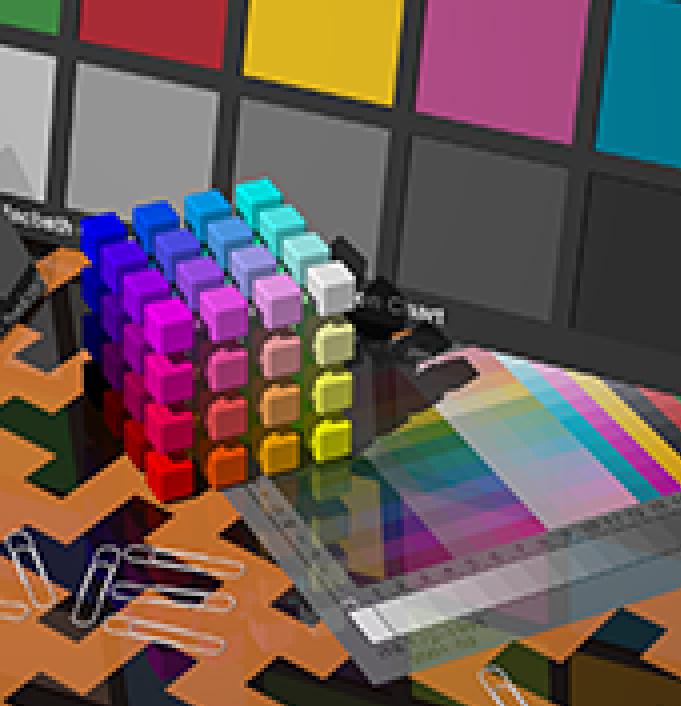
There is haloing visible on the edges of the cubes in the color solid and in some of the patches in the Munsell chart. There is a striking change in apparent brightness of the parts of the paper clips that are near the black parts of the desktop. In fact, all the downsampled image suffer from this defect to a greater or lesser degree. There are halos around the black figures on the desktop. This is not good performance.
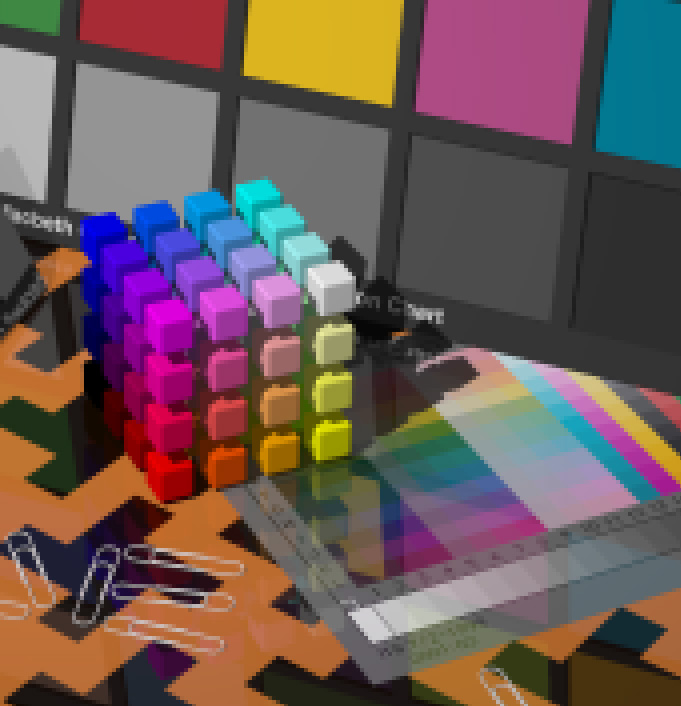
There are no halos around the Munsell patches or the color solid cubes. The edges of the Munsell patches are soft. There are some brightness anomalies in the paper clips, but they’re nowhere near as bad as with bicubic sharper.
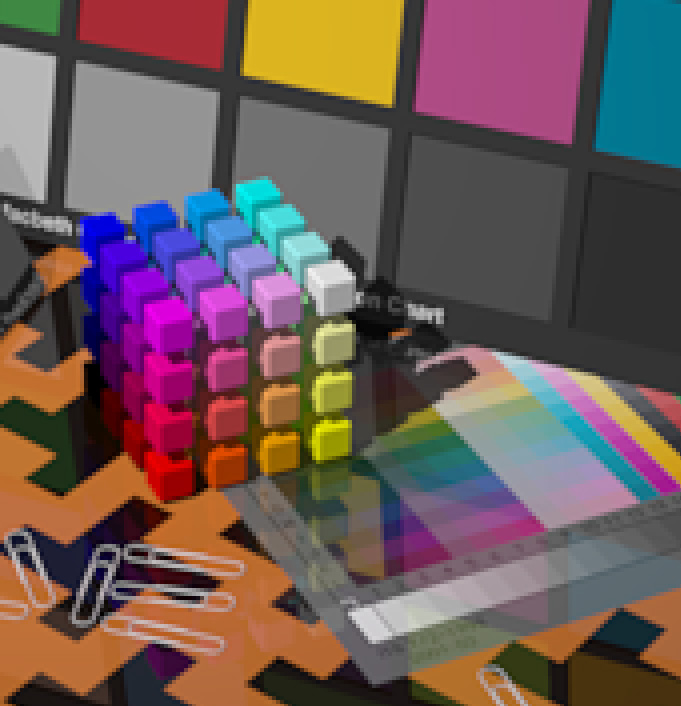
The EWA image with moderate deblur has the most realistic depiction of the paper clips. There is no haloing at all. Very good performance.
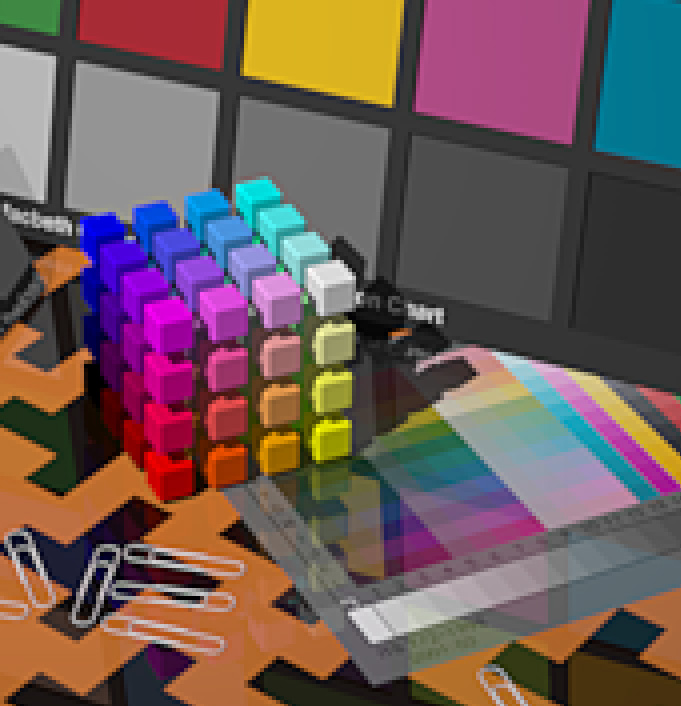
Stepping up the deblurring to 100 surprisingly doesn affect the paper clips much. There is a hint of aliasing in the yellow Munsell patch.
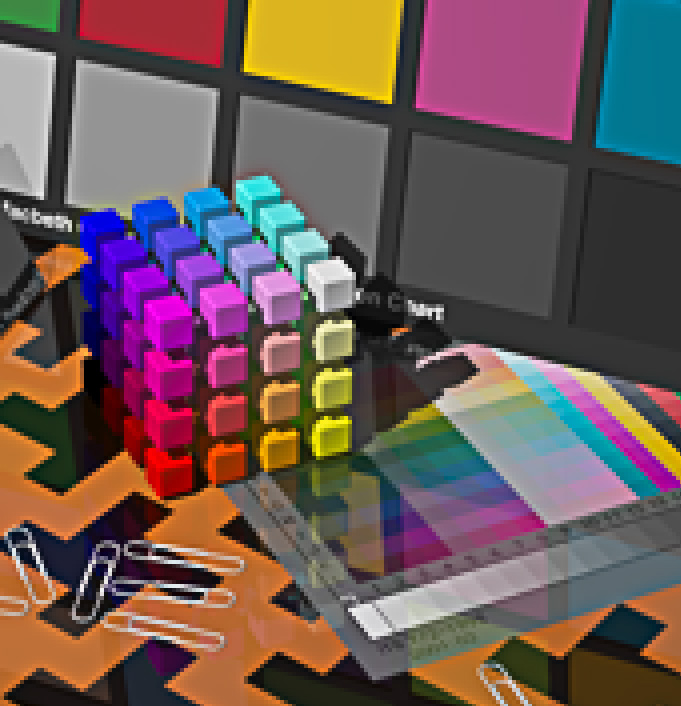
The paper clips are even worse then bicubic sharper. There is distinct haloing. The haloing on the magenta Munsell patch is associated with a hue shift.
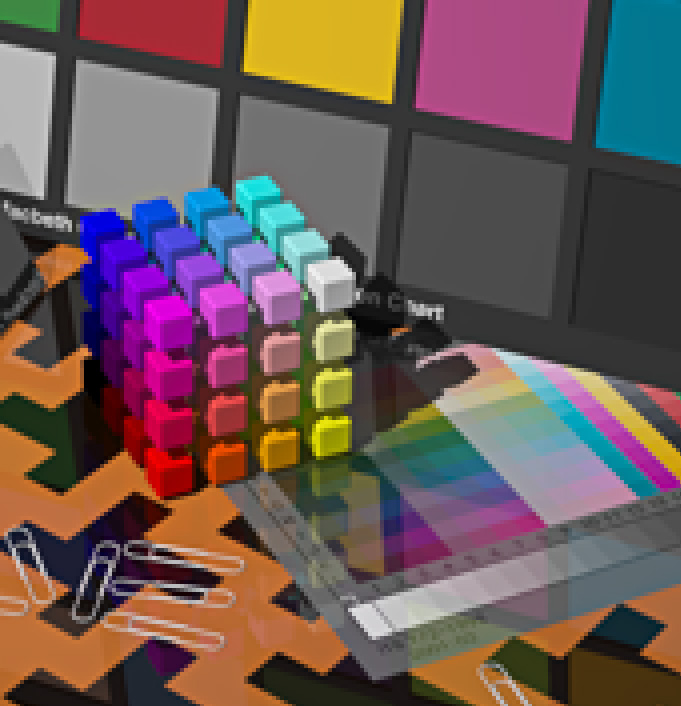
Not too bad performance on the paper clips. A little haloing, but also not bad.
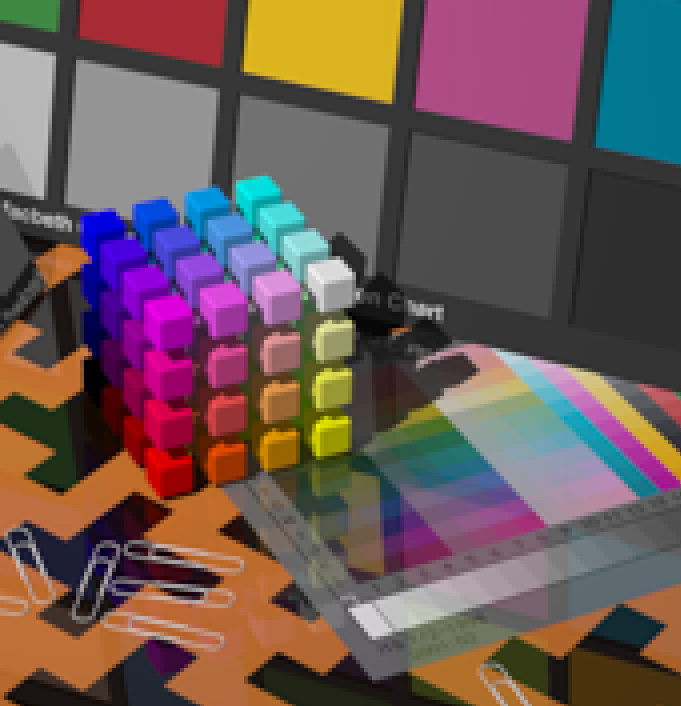
More modulation of the paper clip brightness by the background that EWA with deblur = 50. Image is less punchy, too, but I think it’s in second place.
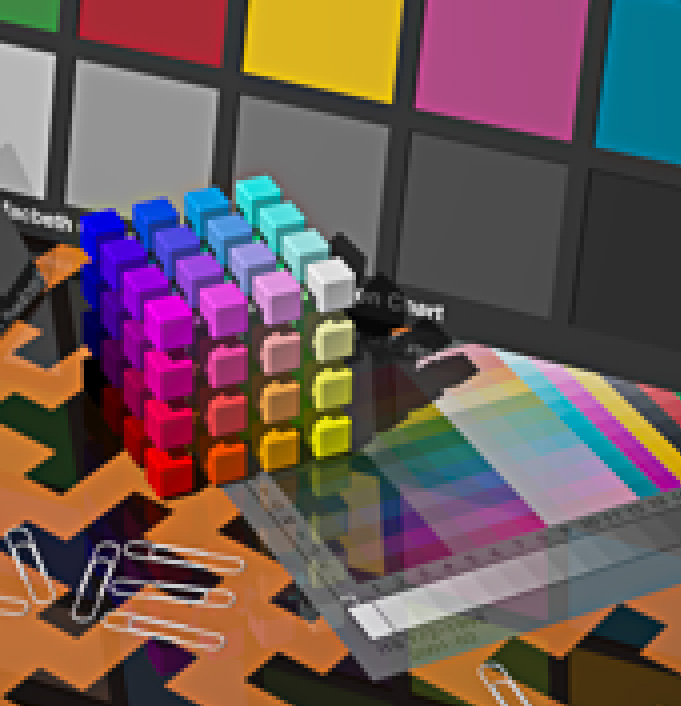
As you might expect, halfway between Lightroom Low and Lightroom High sharpening. Too much haloing for my tastes, but might be OK if printed to a printer that rolls off the high spactial frequencies.
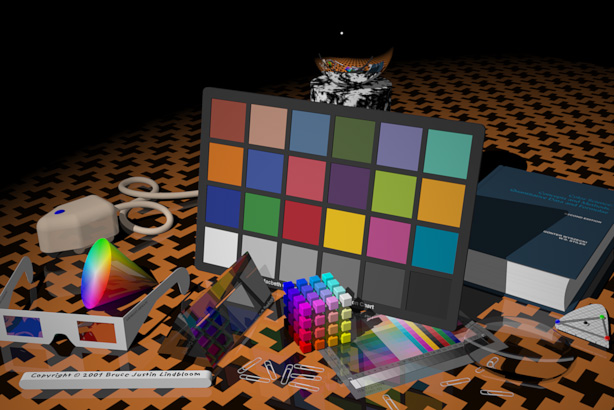
Leave a Reply